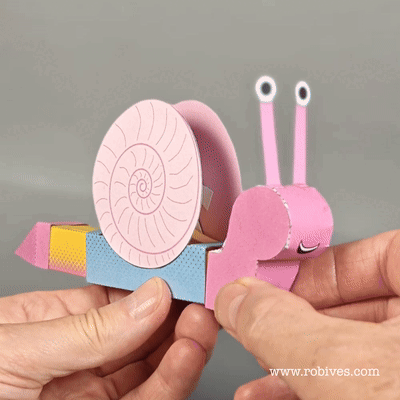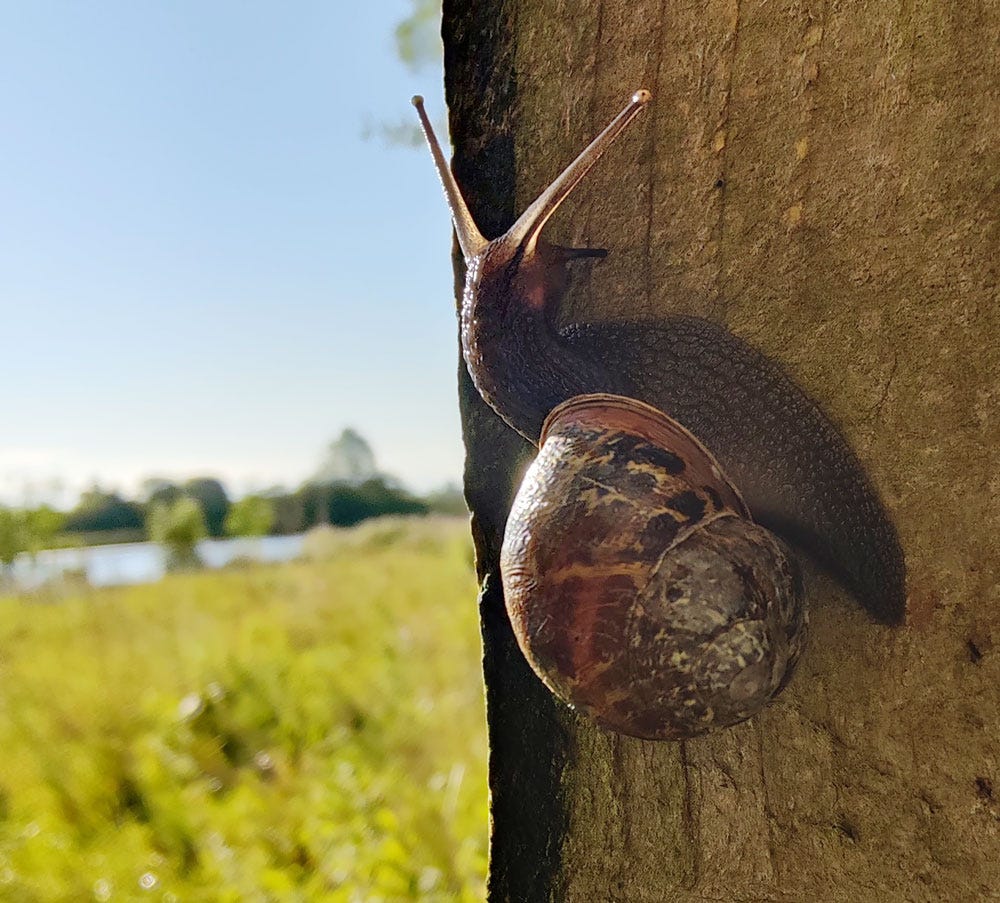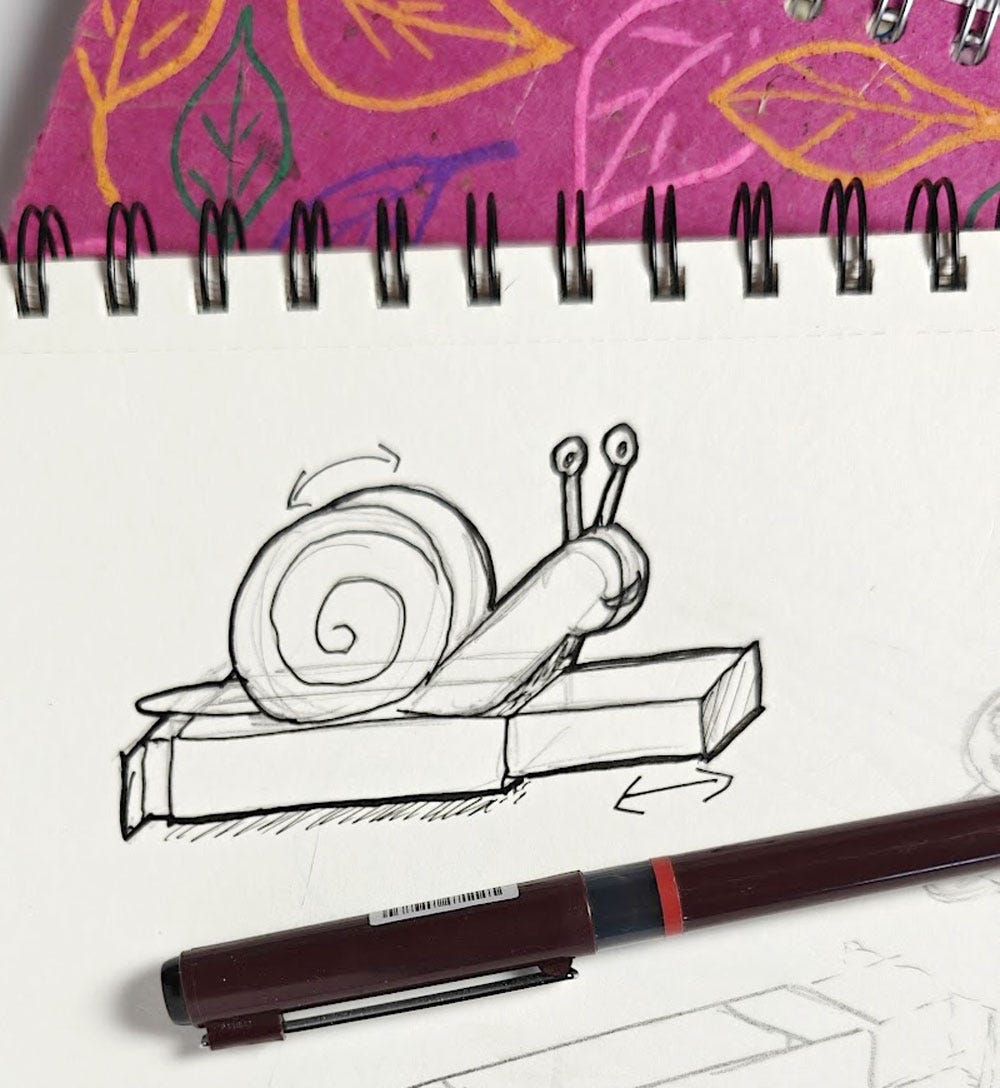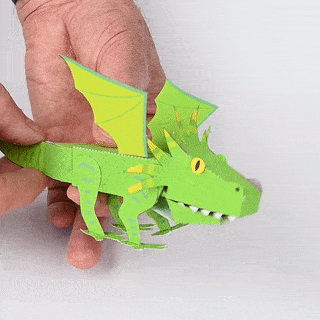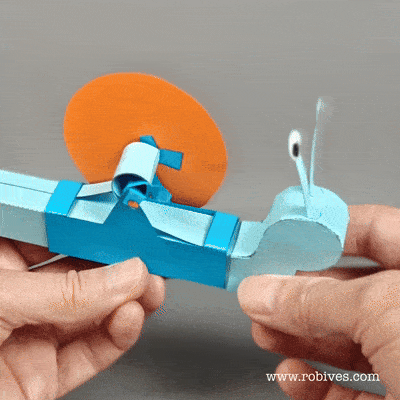Paper Snail.
Henri Escargot the #PaperAutomata snail
There’s something quietly charming about watching this little snail. Pull his tail and his shell spins, not what a real snail does yet somehow it seems right. It’s simple, satisfying, and designed to be built in under an hour.
This is the first in a new series of quick-build automata kits that are friendly, whimsical, and hopefully full of character. I’ve been calling them Mechanical Haiku: short forms that capture a mood, a motion, or a memory. The name may change but I like it for now
The snail is now available as a downloadable pdf, with clear step by step instructions and all the parts you need ready to print out, cut out and make.. Perfect for beginners, curious minds, or anyone who needs a reminder to slow down and enjoy the making. If you are not a premium subscriber you can download the snail for £5 or equivalent here.
A little something for subscribers…
If you're a premium subscriber to this newsletter, first of all, thank you! Secondly, you’ll find the downloadable PDF for the snail kit (parts and instructions) waiting for you at the foot of this page.
Not a premium subscriber yet? You can sign up here. It gives you access not just to the snail model, but to all the other projects from previous newsletters, and there are quite a few now!
If you're an annual subscriber, you can also get full access to all the projects on www.robives.com. Just visit the membership page there, set yourself up with a free account, then drop me a note. I haven’t automated the process yet, but I’m always happy to upgrade your account manually.
Thanks again for being part of this slow-and-steady adventure.
Mechanical Haiku
Over the past couple of months, I’ve found myself in situations where I needed a paper automaton that could be shared and built in under an hour. Something quick, approachable, and still quietly joyful. The trouble is, most of the projects in my portfolio take a couple of hours or more to make.
And so the idea took root: a new range of simpler builds, kits that come together quickly but still carry a bit of charm, a flicker of delight, and that satisfying moment when motion meets magic. I’ve started calling them Mechanical Haiku: short-form automata, much like the poetry they’re named after. Just as a haiku distills a moment into three delicate lines, these little machines aim to capture a flicker of motion, a feeling, or a story, told not with words, but with cams, levers, and paper. They’re quick to make, but linger in the imagination.
I’m hoping to create a small range of what I hope will be useful, fun and inspirational paper automata projects with the linking theme being that they can be put together in under an hour. So where to start? Early morning a couple of weeks back I came across a rather handsome snail as I was walking along the canal tow path
I was working on another project at the time, but during my morning walk my mind wandered, as it often does. I started thinking about the idea of a snail automaton. They’re slow, right? They have shells, eyes on stalks… maybe even wavy eyes? That slow, slithering glide? I started sketching possibilities in my head. But then it struck me: I didn’t need to be literal.
The shell is nearly a circle—what if it rotated? What if the head gently lifted and lowered as the shell turned, a quiet nod to slow motion? Time for a quick sketch. And then, time to stop thinking about snails and return to what I was actually meant to be working on.
I find this bit hard. Tangents tug at me. Ideas arrive uninvited and linger. But I’ve learned that I’m not really an automata maker if I never finish an automaton. So the snail sketch was tucked away, for now.
Once the Waddling Duck and a magazine article were safely out the door, I circled back to the snail. The first thing that struck me was the box, maybe I didn’t need it? One less thing to make, I remembered a set of freestanding paper dragons I’d made for Brother International some time ago, where the mechanism was activated by pulling the tail. Could the snail work like that too? A gentle tug, a spinning shell, a nodding head… It felt promising. The idea was starting to slither its way forward.
Early on I dropped the idea of a moving head. Lets just keep things simple. In the design of the snail project, the challenge was turning the straight-line pull of the tail into a rotary motion in the shell. I sketched out a couple of possible mechanisms.
In the first, the shell is mounted on an axle so it can rotate freely. A lever is fixed to the axle, and a strap connects the end of the lever to the snail’s tail slider. Pulling the tail pulls the strap, which moves the lever and rotates the axle. It would probably work fine, but I’m not sure how much rotation I’d get, maybe ninety degrees? I really wanted the shell to turn more, so perhaps not this one.
The second idea felt more promising. By adding a series of small slots to the top of the body I created the idea of a rack. The shell’s axle has a pinion gear, the gear teeth slot into the rack so that as the tail is pulled, the shell rotates. With a small enough pinion, I could probably get a full three-sixty spin! But… my aim was to keep this project simple to make, ideally without needing a sharp knife. So I’ve parked this idea for now, saving it for a future, slightly more ambitious model.
Here’s what I came up with for the final mechanism.
Remember, the aim was to keep things simple and quick, no sharp knife needed in the construction. That ruled out cutting circular holes for an axle, so I settled on a paper hinge. It meant full rotation was off the table, but I reckoned I could still get over one-eighty degrees of movement if I was lucky. To push the shell further than the lever idea allowed I built a sort of pulley with a hinge joint in the middle. A strap wrapped around the pulley, with a second strap rotating in the opposite direction. Both straps connected to the body, spinning the shell as the tail was pulled. It worked a treat, total rotation was just over two hundred and twenty degrees.
Once I’d settled on a mechanism, I built a couple of prototypes, fine-tuned the geometry, and put together the final project. The result: Henri Escargot, the Paper Snail. Pull his tail and make his shell spin! I timed an assembly of the finished kit. It took six minutes to score, fourteen to cut out, twenty-four for assembly. Total build time: forty-four minutes. Now, I’m fairly fast and didn’t need to read the instructions, but I still reckon most people will be able to build the snail comfortably within a one-hour session.
And that’s Henri Escargot, slow by name, swift by build, and full of character. I hope you’ve enjoyed this little glimpse into his creation. Whether you’re a seasoned maker or just snail-curious, thank you for reading and for sharing in the joy of paper engineering. It means a lot. If you do build Henri, I’d love to hear how he turns out, especially if he makes you smile. More simple creatures are quietly lining up behind the curtain, so stay tuned.


